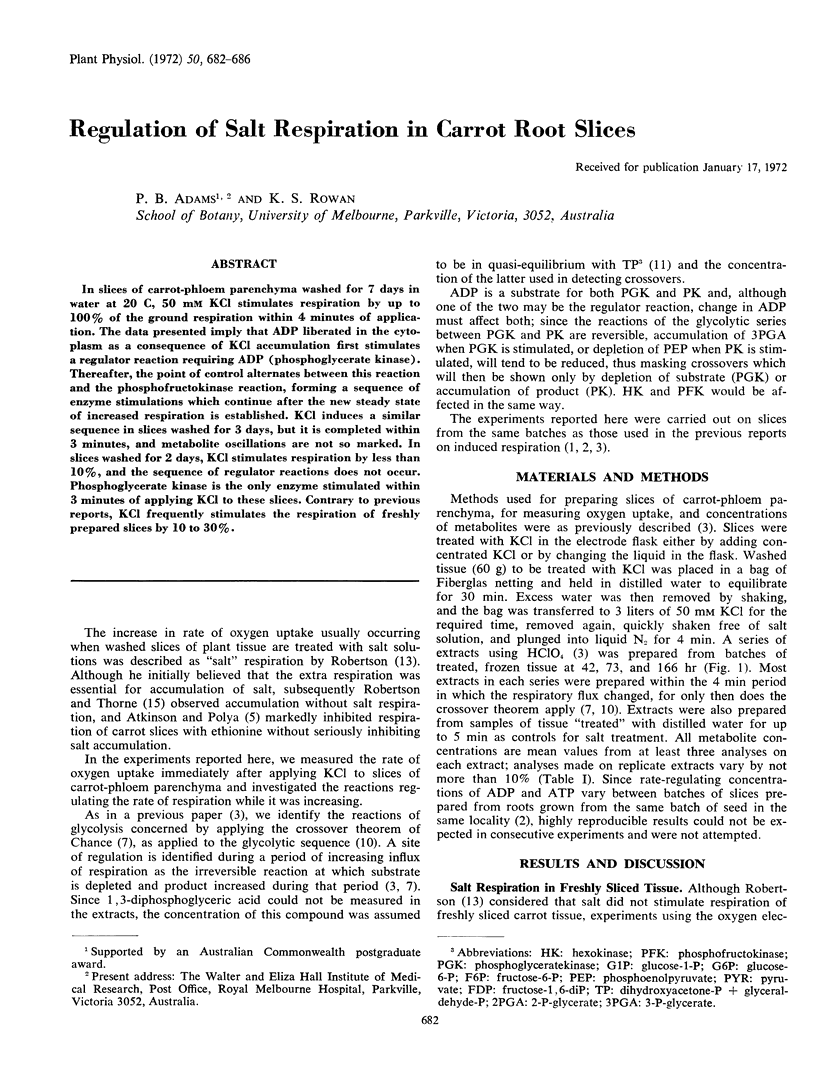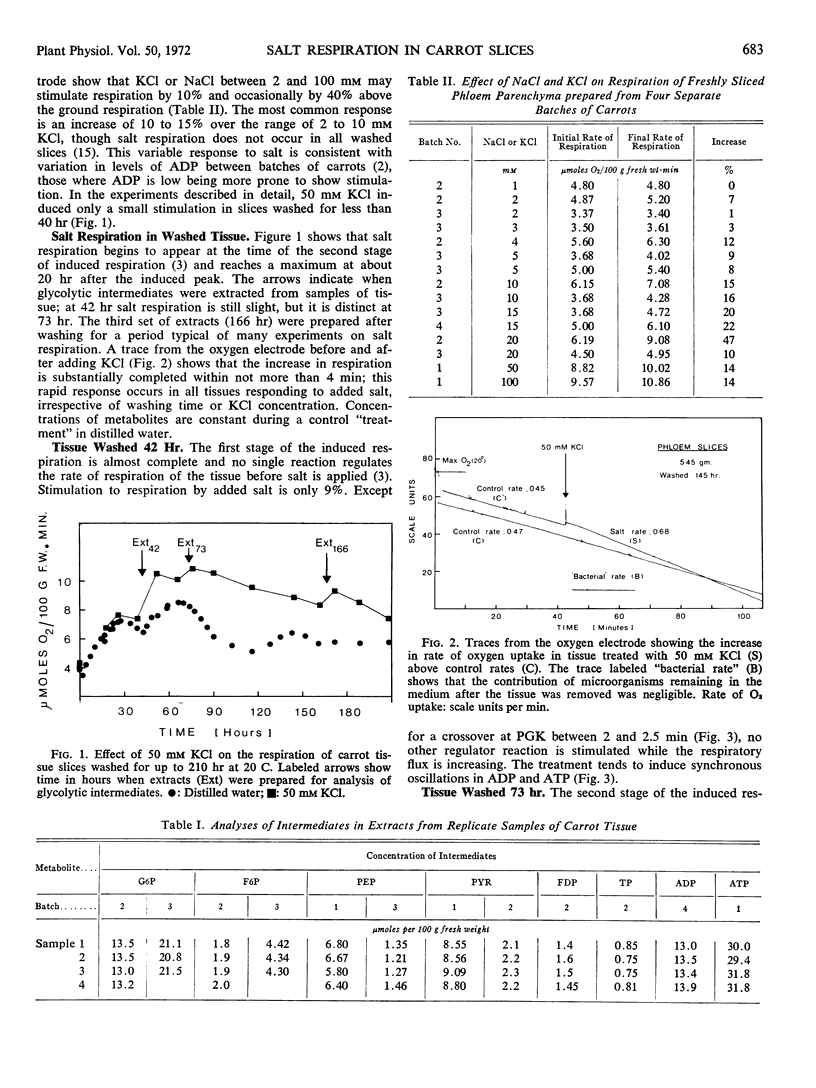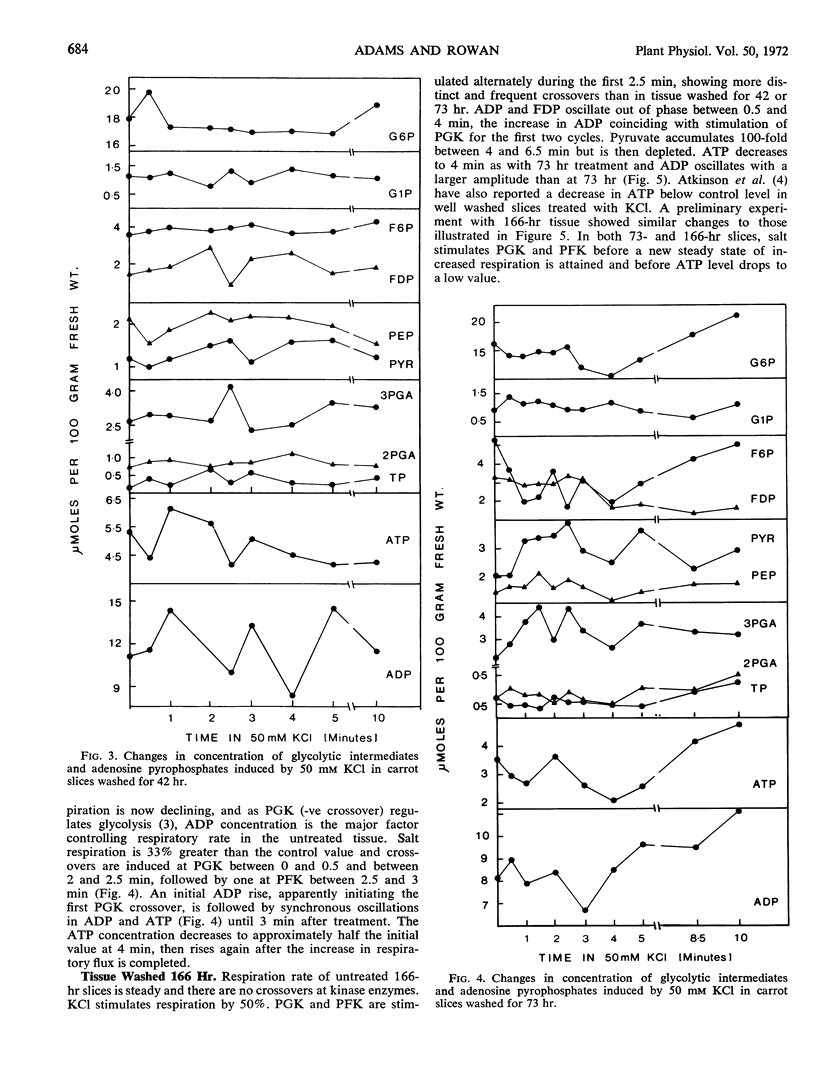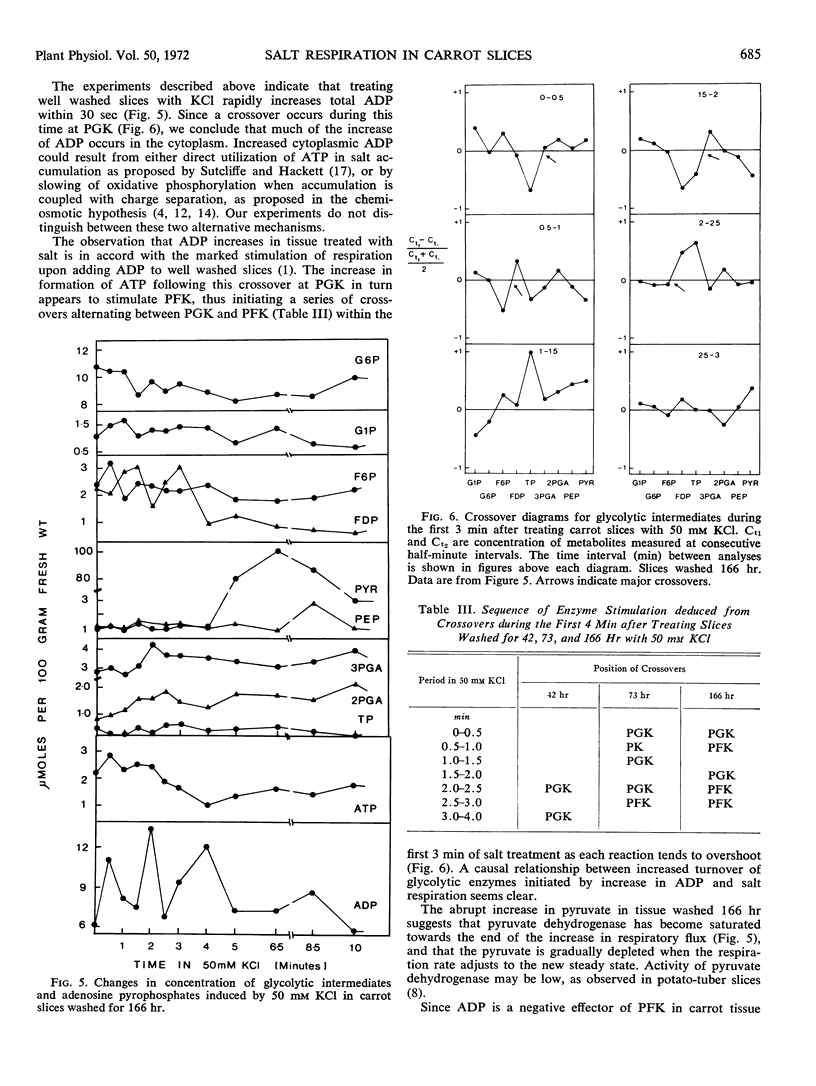Abstract
In slices of carrot-phloem parenchyma washed for 7 days in water at 20 C, 50 mm KCl stimulates respiration by up to 100% of the ground respiration within 4 minutes of application. The data presented imply that ADP liberated in the cytoplasm as a consequence of KCl accumulation first stimulates a regulator reaction requiring ADP (phosphoglycerate kinase). Thereafter, the point of control alternates between this reaction and the phosphofructokinase reaction, forming a sequence of enzyme stimulations which continue after the new steady state of increased respiration is established. KCl induces a similar sequence in slices washed for 3 days, but it is completed within 3 minutes, and metabolite oscillations are not so marked. In slices washed for 2 days, KCl stimulates respiration by less than 10%, and the sequence of regulator reactions does not occur. Phosphoglycerate kinase is the only enzyme stimulated within 3 minutes of applying KCl to these slices. Contrary to previous reports, KCl frequently stimulates the respiration of freshly prepared slices by 10 to 30%.
Full text
PDF




Selected References
These references are in PubMed. This may not be the complete list of references from this article.
- Adams P. B. Effect of adenine nucleotides on levels of glycolytic intermediates during the development of induced respiration in carrot root slices. Plant Physiol. 1970 Apr;45(4):500–503. doi: 10.1104/pp.45.4.500. [DOI] [PMC free article] [PubMed] [Google Scholar]
- Adams P. B. Effect of adenine nucleotides on the respiration of carrot root slices. Plant Physiol. 1970 Apr;45(4):495–499. doi: 10.1104/pp.45.4.495. [DOI] [PMC free article] [PubMed] [Google Scholar]
- Adams P. B., Rowan K. S. Glycolytic control of respiration during aging of carrot root tissue. Plant Physiol. 1970 Apr;45(4):490–494. doi: 10.1104/pp.45.4.490. [DOI] [PMC free article] [PubMed] [Google Scholar]
- Atkinson M. R., Eckermann G., Grant M., Robertson R. N. Salt accumulation and adenosine triphosphate in carrot xylem tissue. Proc Natl Acad Sci U S A. 1966 Mar;55(3):560–564. doi: 10.1073/pnas.55.3.560. [DOI] [PMC free article] [PubMed] [Google Scholar]
- BETZ A., CHANCE B. PHASE RELATIONSHIP OF GLYCOLYTIC INTERMEDIATES IN YEAST CELLS WITH OSCILLATORY METABOLIC CONTROL. Arch Biochem Biophys. 1965 Mar;109:585–594. doi: 10.1016/0003-9861(65)90404-2. [DOI] [PubMed] [Google Scholar]
- CHANCE B., HOLMES W., HIGGINS J., CONNELLY C. M. Localization of interaction sites in multi-component transfer systems: theorems derived from analogues. Nature. 1958 Nov 1;182(4644):1190–1193. doi: 10.1038/1821190a0. [DOI] [PubMed] [Google Scholar]
- Crompton M., Laties G. G. The regulatory function of potato pyruvate dehydrogenase. Arch Biochem Biophys. 1971 Mar;143(1):143–150. doi: 10.1016/0003-9861(71)90194-9. [DOI] [PubMed] [Google Scholar]
- Dennis D. T., Coultate T. P. Phosphofructokinase, a regulatory enzyme in plants. Biochem Biophys Res Commun. 1966 Oct 20;25(2):187–191. doi: 10.1016/0006-291x(66)90578-x. [DOI] [PubMed] [Google Scholar]
- Ghosh A., Chance B. Oscillations of glycolytic intermediates in yeast cells. Biochem Biophys Res Commun. 1964 Jun 1;16(2):174–181. doi: 10.1016/0006-291x(64)90357-2. [DOI] [PubMed] [Google Scholar]
- Mitchell P. Chemiosmotic coupling in oxidative and photosynthetic phosphorylation. Biol Rev Camb Philos Soc. 1966 Aug;41(3):445–502. doi: 10.1111/j.1469-185x.1966.tb01501.x. [DOI] [PubMed] [Google Scholar]
- ROBERTSON R. N., WILKINS M. J., WEEKS D. C. Studies in the metabolism of plant cells. IX. The effects of 2,4-dinitrophenol on salt accumulation and salt respiration. Aust J Sci Res B. 1951 Aug;4(3):248–264. doi: 10.1071/bi9510248. [DOI] [PubMed] [Google Scholar]
- SUTCLIFFE J. F., HACKETT D. P. Efficiency of ion transport in biological systems. Nature. 1957 Jul 13;180(4576):95–96. doi: 10.1038/180095a0. [DOI] [PubMed] [Google Scholar]


